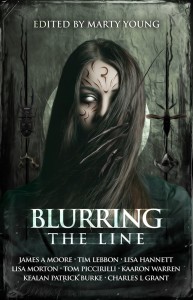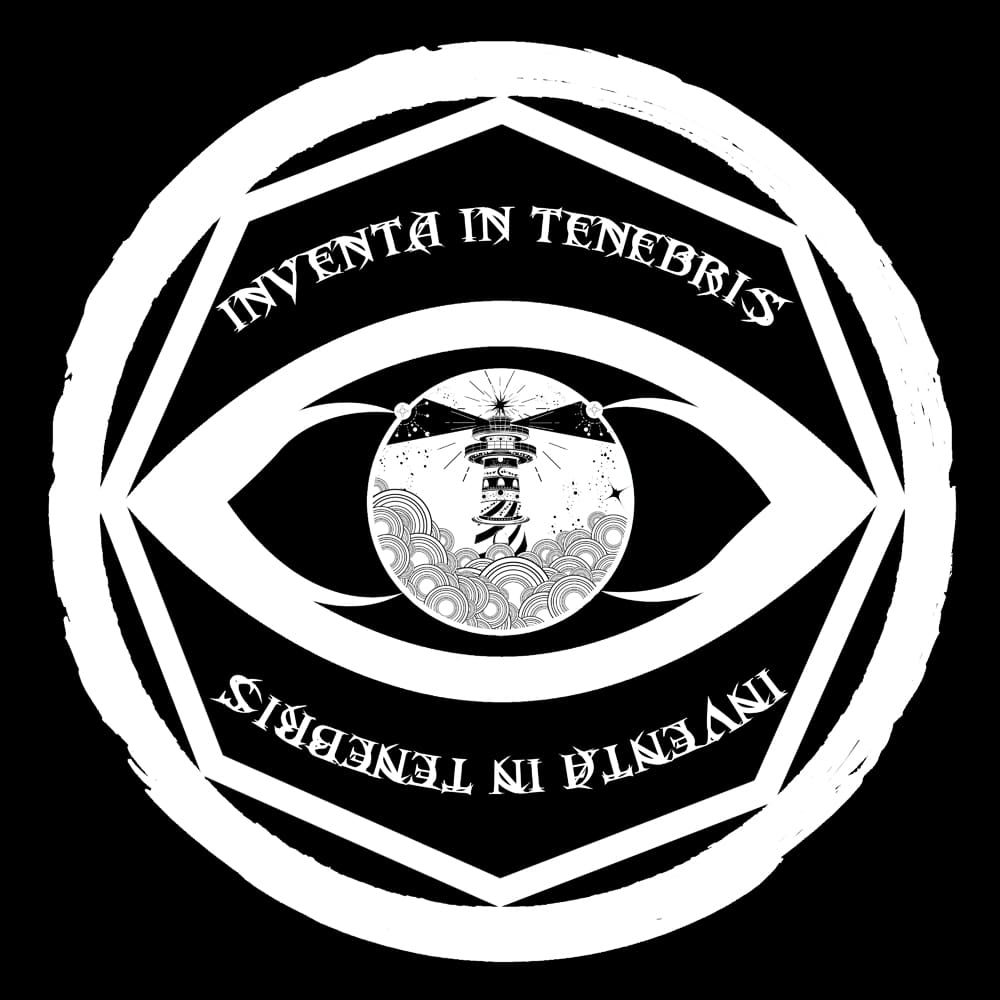 Blurring The Line is the new anthology of horror fiction and non-fiction, edited by award-winning editor Marty Young, published by Cohesion Press. You can get your copy here or anywhere you normally buy books (the print edition is coming any day now).
Blurring The Line is the new anthology of horror fiction and non-fiction, edited by award-winning editor Marty Young, published by Cohesion Press. You can get your copy here or anywhere you normally buy books (the print edition is coming any day now).
To help people learn a bit more about it, I’ve arranged for each fiction contributor to answer the same five questions, and I’ll be running these mini interviews every weekday now that the book is available.
Today, it’s:
Patricia Esposito
 Patricia J. Esposito is author of Beside the Darker Shore and has published numerous works in anthologies, such as Main Street Rag’s Crossing Lines, Anna Purna’s Clarify, Undertow’s Apparitions, and Transmundane’s Distorted, and in magazines, including Not One of Us, Scarlet Literary Magazine, Rose and Thorn, Wicked Hollow, and Midnight Street. She has received honorable mentions in Ellen Datlow’s Year’s Best Fantasy and Horror collections and is a Pushcart Prize nominee.
Patricia J. Esposito is author of Beside the Darker Shore and has published numerous works in anthologies, such as Main Street Rag’s Crossing Lines, Anna Purna’s Clarify, Undertow’s Apparitions, and Transmundane’s Distorted, and in magazines, including Not One of Us, Scarlet Literary Magazine, Rose and Thorn, Wicked Hollow, and Midnight Street. She has received honorable mentions in Ellen Datlow’s Year’s Best Fantasy and Horror collections and is a Pushcart Prize nominee.
Find her at: http://patricia-j-esposito.
1. What was the inspiration/motivation behind your story in Blurring the Line?
My story “A Distorted and Holy Desire” came out of my need to explore the mystery of music’s deep effect on us. Sometimes we experience art that transcends, that takes the pain of life and lets us experience it and yet, through art, come out of it. Art as catharsis. In the few times I saw the band Beautiful Collision (BeCo) play, I felt that transcendence, and yet the singer/guitarist would say, almost shyly, a very simple, “Thank you.” Sometimes it’s hard to imagine that so much passion and beauty can come from a mortal human form. Sometimes emotion is so great I wonder how we survive it. I wrote to see how I survive it, though I’m not sure I do.
2. What does horror mean to you?
Horror can range from stories that elicit heart palpitations to cringing and nausea to an unease that won’t let go. Horror that makes me jump and then laugh at the adrenaline rush can be fun, and I can appreciate the imagery of a well-done slasher scene—both designed to shake us, give us a quick thrill?—but I generally seek out horror that evokes that unnameable unease, that makes me think and wonder and try to establish how the horror might fit in myself or the world I’m part of. I think the unknown plays into most horror; however, I’m drawn to horror that remains a bit of a mystery, that entails the ambiguous, something that might lie within us if not without, or that we finally perceive with a sense of near awe because it is beyond our control and yet part of this world, not to go away.
3. What’s a horror short story that you think everyone should read?
I had trouble with this because I’ve read a number of excellent short stories from recent years, in magazines and anthologies, and I always wonder what will stand the test of time. I’m a fan of Michael Kelly’s work, which combines the imagistic language I love with the psychological aspects of our inner fears. I’ll offer one of his, “The Woods,” because I think it’s an example of how subtle horror can be most powerful at times. Two old men sit across from each other in a cabin that’s suffocated in snow. We never learn of the crime and no one is accused outright, and yet the tension that builds from what is not stated and from the images of isolation that Kelly conveys so well left me more uneasy than if we’d learned the truth. The chill is in what we know is potential!
4. What horror novel should everyone read?
Here I turn to my personal taste for psychological horror and recommend a classic, Henry James’s Turn of the Screw. I first read the novella in high school, and it remained with me ever since, obviously influencing my own horror. I like when barriers between worlds seem to be breaking, and yet it could be what our own minds and distressed subconscious have done. How often and easily we scare ourselves by letting the imagination go; yet usually something keeps us over the edge. I like to explore going over that edge. (I’d also always recommend Ray Bradbury for the experience of his imagery that makes us thoroughly feel the world and the characters and for the elevated nature of what he proposes we can be.)
5. Name something that you think just might be real, or might not…
When it’s quiet and I’m absorbed in my writing, I wonder if all that had faded around me was ever real, or if we design the tangible in a collective effort for sanity.
___________________________________
Previous posts in the Blurring The Line interview series:
Marty Young
Tom Piccirilli
Lisa Morton
Tim Lebbon
Lia Swope Mitchell
Alan Baxter
James Dorr
Peter Hagelslag
Gregory L Norris
Steven Lloyd Wilson
James A Moore
Alex C Renwick
Lisa L Hannett
Kealan Patrick Burke
Brett McBean
Kaaron Warren
Paul Mannering
Charles L Grant
Annie NeugeBauer
.
